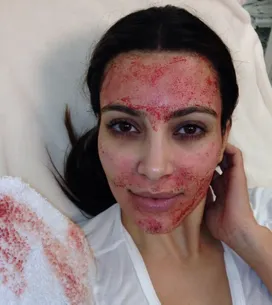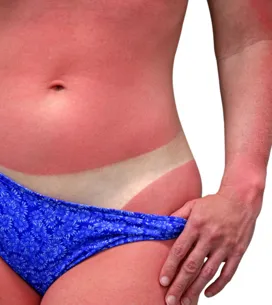How it works
Hyaluronic acid is a gel-like, transparent substance present mainly in the skin where (along with other substances) it fills in the spaces between diverse fibres. It’s found in large quantities in our bodies in youth, but it gets destroyed over time. At 50 for example, we only have 50% of our hyaluronic acid stock left.
Cosmetic surgeons use hyaluronic acid injections to fill in wrinkles. The product used is a synthetic, biodegradable gel which attracts water and mixes with the hyaluronic acid in the skin's dermis, restoring its former volume. This technique also stimulates the synthesis of hyaluronic acid in the skin as well as stimulating collagen production.
The product comes in a reticulated form (dense) or non-reticulated (liquid). The former is the most compact and stable over a longer period (from 6 - 9 months or even longer). The liquid version maintains results for around 3 months.
The procedure
A session lasts for about 30 minutes. Hyaluronic acid is injected into the skin in the form of a transparent gel using a very thin needle. Underneath the wrinkle, it swells the tissues and restores skin’s smooth and natural feel. Sometimes, depending on the area being treated, the surgeon might use a local anaesthetic.
The injection methods are the same as those for collagen. The surgeon might choose to carry out a single injection under a targeted wrinkle, using it as a guide. The wrinkle is filled in and the tissues moved up to the level of the neighbouring non-wrinkled skin. Alternatively, the surgeon might opt for several small injections whereby he injects a succession of tiny drops of the product under the wrinkle. Note that this method could produce unevenness and little lumps if it’s not spread properly.
For which wrinkles?
- Nasolabial folds (from the nose to mouth);
- Marionette lines, peri-oral lines, oral commissures (wrinkles around the mouth);
- Bunny lines or lion wrinkles (space between eyebrows);
- Crow’s feet (at the edge of eyes);
- Frown lines (on the forehead).
What you need to know
- After the treatment, redness and swelling may occur but should disappear within 24 to 48 hours. Avoid exposing yourself to extreme temperatures in the 10 days following the injection.
- The effects are immediate and there is no scarring.
- It’s one of the safest dermal fillers. There are few cases in which hyaluronic acid is not recommended: skin diseases, diabetes or autoimmune illnesses.
- In some cases, combining hyaluronic acid with Botulinum toxin (Botox®![]() gives outstanding results.
gives outstanding results.
- Some scars can also be treated with hyaluronic acid injections.
- There are hyaluronic acids of synthetic origin which don't contain animal protein. It’s not necessary to carry out a test before these injections, like with collagen.
- The effects are visible for 3 to 9 months, after which time the product is reabsorbed. The majority of patients have a second session between 6 and 12 months after their first one.
- Before having any treatment, make sure you’re satisfied with the competency and experience of the surgeon, and ask for a cost estimate of all the treatment you plan to have.
- Rates vary according to the number of wrinkles to treat from £150 to £750. The average cost of one session for the treatment of nasolabial folds is £300.
Photo: Chanel














